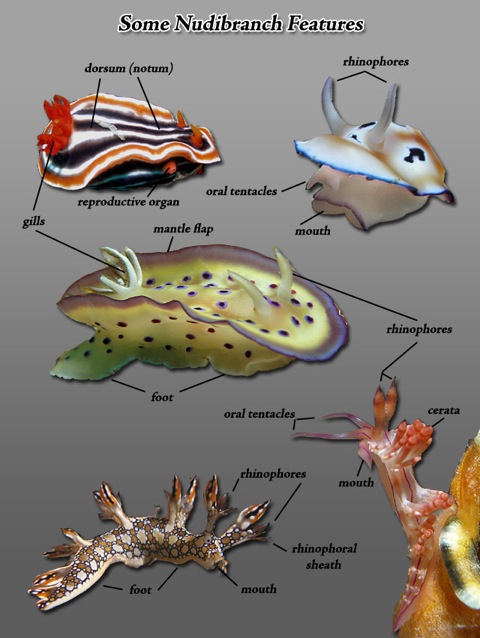NUDIBRANCHS - NUDIBRANCHIA
- Check the sub-folders for the specimen information files -
Nudibranchs can be found in all the world's seas and oceans at different depths and in different habitats. They belong to the subclass known as ophistobranchs, which includes headshield slugs and seahares. Nudibranchs (naked gills) are very delicate and apart from their bad taste, don't have any protection. They even lost their protective shield through evolution which of course makes them more mobile. Nudibranchs rely on the toxins they build up from their diet. Many have long appendages (cerata) in which they store nematocysts that come from eating hydroids. If bitten, their predator will receive a mouth full of nematocyst and immediately loose interest. The cerata which are lost or damaged will directly re-grow. Some nudibranch look like a painting, others like candy. Some have warts, others have flaps. Some look very hairy, others look like a jelly. Except a few tropical reef fish, there are almost no animals that have color combinations like nudibranch. Like other gastropods, nudibranchs have a pair of rhinophores (soft horns) which are used for detecting odors. These are retractable. Some nudibranch are herbivores and use their radula (rasp-like tongue) to scrape algae of the substrate. However, depending on the species, they are also known to eat hydroids, corals, anemones, sponge, tunicates and bryozoans. The bright multi colored nudibranchs use their colouring to warn predators that they are noxious or even toxic. Many nudibranch acquire their color from their food and those that have a single color, do so for camouflage. All opisthobranchs are hermaphroditic, so have male and female reproductive organs. These are always based close to the back of their heads, on the right-hand side of the body. After fertilization, the snails will separate and crawl away to lay their spawn on one particular part of substrate, so the eggs match and blend into the background. Some nudibranch are able to store sperm from another nudibranch for months until the environmental conditions are right for reproduction. Most nudibranch only have a short life span.
- Check the sub-folders for the specimen information files -









